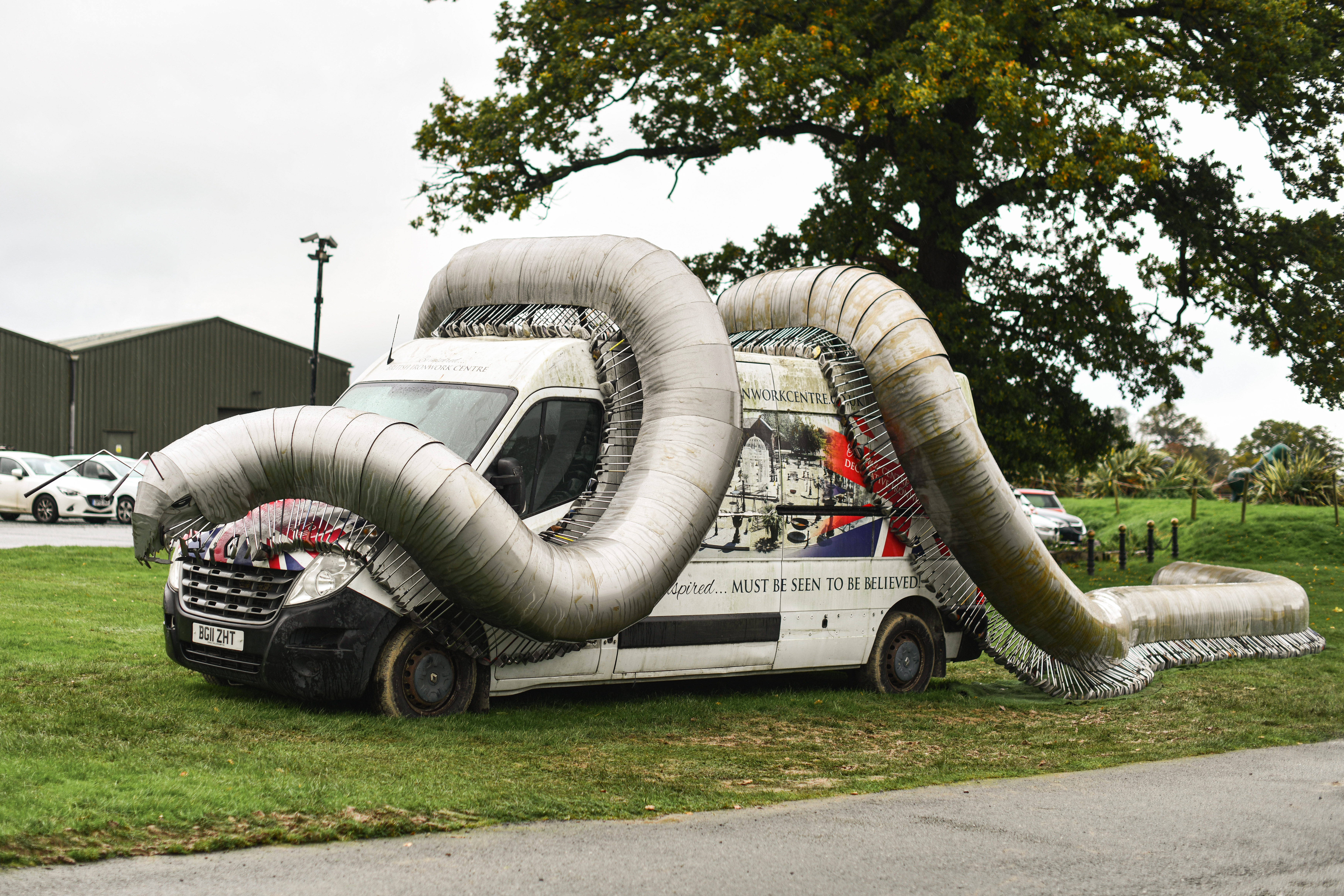-
How similar are we really to chimpanzees? Humans did not evolve from chimpanzees but we do share common ancestors. Humans diverged from the chimpanzee lineage between 9.3 million and 6.5 million years ago, but we still share 98.8% of our DNA. What do we have in common with chimpanzees? We share many behaviours and traits with these beautiful animals. Humans and chimpanzees love to play, smile and cook with their favourite ingredients. Like humans, chimpanzees are aware o...
Read more... -
We are looking for an artist to create something beautiful from wood waste. We won’t be using any wood that can be deemed “useful”, we want scrap and waste! So, what is a pile of scrap wood to you? Rubbish? Or kindling? Here at the Ironworks, we’re always looking for new ways to create art from all sorts of materials. Wood is a fantastic substance to craft from. It is hardy and versatile and will eventually decompose, leaving no lasting trace on our planet. Wood ...
Read more... -
The trunk of an elephant is a marvel of biology! Composed of 140 kilograms of flesh, fat, nerves, connective tissue and muscle, the trunk of an elephant is usually around 7 feet long, and can hold up to 12 litres of water at a time. Elephants use their trunks to eat and drink, smell and to communicate with one another. They also use them as snorkels and to bat away potential threats. Using their trunks, elephants can detect water up to 19km away! How strong is an elephant ...
Read more... -
The Welsh Dragon: there is no symbol quite like it. Adorning the country’s flag, this dragon is flown around the world to mark St. David’s Day and numerous sporting events. It is often said that compared to other nations, the Welsh have a positive relationship with their dragon; heroes throughout its history often praised for being “dragon-like”. The Origins of the Welsh Dragon The origins of Y Ddraig Goch are buried deep in history and mythology. Celtic king, Vo...
Read more... -
Pegasus is a winged horse that originated deep within the tales and stories of Greek Mythology. Ancient Greek civilisation occurred between 1200 BCE and 323BCE, so the legend of Pegasus is thousands of years old. Often depicted as a white stallion, Pegasus was born when his mother, the Gorgon Medusa, was beheaded by Greek hero, Perseus. Pegasus was tamed by Bellerophon, and together they defeated the Chimera. HOW WAS PEGASUS CAUGHT? The tale begins when the Lycian king, I...
Read more... -
Greater Kudu are one of the largest species of antelope and can be found in various parts of the African continent. They can weigh up to 315kg and are characterised by their white stripes and towering, spiralling horns which can be up to 1.8m long! Despite their horns, these gentle creatures seldom fight. They are very rarely aggressive in the wild and they will only fight with opponents of the same size and age. They are generally considered stealthy and hard to spot; givi...
Read more... -
Millipedes are a group of arthropods characterised by their many pairs of legs! Essential to our ecosystem, millipedes are harmless insects that move slowly through organic matter, breaking down plant material and rejuvenating the soil. These detritivores play a huge part in recycling nutrients back into the soil. Millipedes can live for up to 10 years! About our Sculpture Made from over 2,000 unwanted gold clubs donated by our wonderful members and visitors, we created thi...
Read more... -
Hammerhead sharks are magnificent sea creatures that can grow up to 6 metres long. This keystone species predominantly lives in coastal areas, including that of Africa, South Asia, North Australia and Central America. Although hammerheads are considered aggressive hunters, they pose very little threat to humans. To date, there have only been 16 instances of a hammerhead biting a human, and of these, none resulted in fatality. They don’t eat mammals, so we’d never look li...
Read more... -
Walrus are magnificent Arctic giants that can weigh up to 2 tonnes. Their tusks never stop growing throughout their lifetimes, and can measure up to a metre long. A walrus skeleton is surrounded by a thick layer of blubber which helps to keep them warm in the cold waters they call home. Are walruses endangered? Walrus are not officially considered endangered. However, scientists have been imploring governments around the world to protect this magical species under the Endan...
Read more... -
Moose are the largest members of the deer family. They stand at around six feet tall (from hoof to shoulder), and weigh in at more than 450 kilograms. That’s more than 70 stone! These gargantuan creatures call the colder climates of the northern states of America, Canada, Russia and Europe home. Here, they graze on vast amounts of leaves, twigs and aquatic vegetation, consuming nearly 30kg a day! Why are moose important? Moose are vital in shaping young forest and keepin...
Read more...



